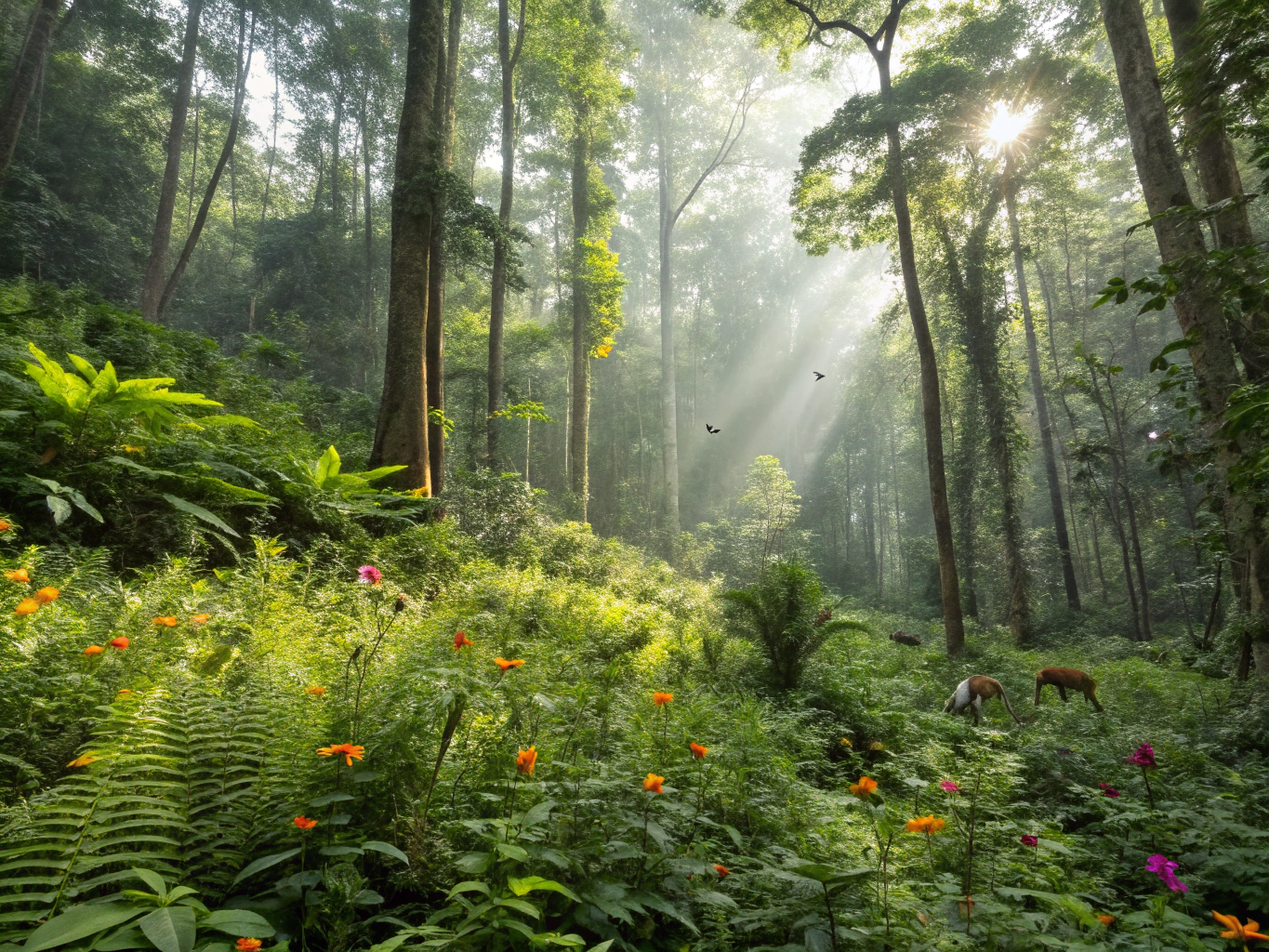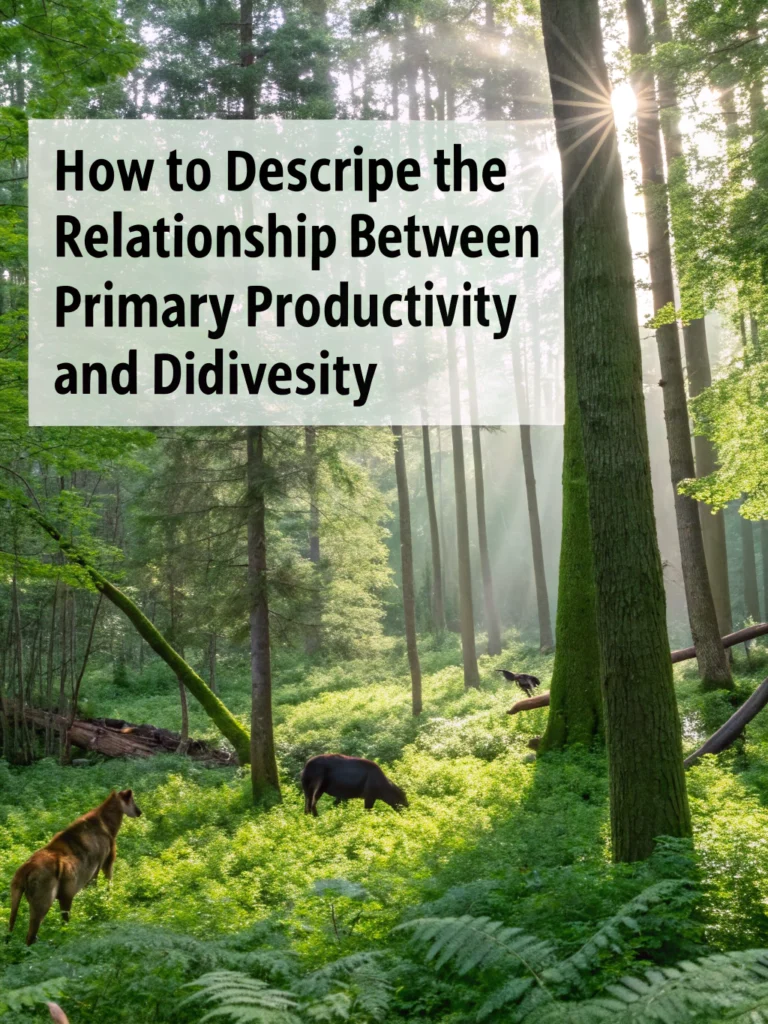How to Describe the Relationship Between Primary Productivity and Biodiversity
Understanding how to describe the relationship between primary productivity and biodiversity is essential for anyone interested in environmental science, ecology, or conservation. Both concepts are intimately connected, influencing each other in significant ways. In this article, we’ll break down what primary productivity and biodiversity mean, how they interact, and why this relationship is important for ecosystems.
What is Primary Productivity?
Primary productivity refers to the rate at which energy is converted by photosynthetic and chemosynthetic autotrophs (like plants and algae) into organic substances. It's a measure of how much biomass — or living matter — is generated in a given area over time. This is crucial because it forms the base of the food web.
- High primary productivity indicates a rich environment capable of supporting a wide array of organisms.
- Low primary productivity can lead to a lack of resources, affecting species diversity.
What is Biodiversity?
Biodiversity encompasses the variety of life on Earth. It includes the diversity of species, their genetic variations, and the ecosystems they inhabit. Biodiversity is crucial for sustaining ecosystem services like food production, nutrient cycling, and climate regulation.
- A diverse ecosystem is more resilient to changes and stresses.
- Biodiversity allows for a greater range of interactions within ecosystems, enhancing stability.
The Relationship Between Primary Productivity and Biodiversity
Exploring the Connection
To describe the relationship between primary productivity and biodiversity, it’s important to consider the ecosystem biodiversity and productivity link. Generally, higher levels of primary productivity can support more diverse ecosystems. Here’s how they connect:
- Resources: Increased primary productivity means more food sources available, which can support a larger number of species.
- Habitat Diversity: Areas with high productivity often have complex habitats, which help provide niches for different species.
- Stability: Diverse ecosystems can better withstand environmental changes, allowing for sustained productivity.
How Biodiversity Affects Primary Productivity
Understanding how biodiversity affects primary productivity is equally important. Diverse ecosystems can enhance productivity through:
- Niche differentiation: Different species utilize resources in varied ways, reducing competition and optimizing resource use.
- Positive interactions: Biodiverse systems can experience synergistic effects, where the presence of one species benefits another, boosting overall productivity.
- Resilience to disturbances: Greater biodiversity can lead to ecosystems being more adaptable, sustaining productivity even in changing conditions.
In essence, the relationship between biodiversity and productivity is bidirectional; they influence and reinforce each other. When biodiversity is high, so is primary productivity, and vice versa.
Biodiversity Ecological Impact
The biodiversity ecological impact is profound. Regions with rich biological diversity tend to have healthier ecosystems that function more efficiently. Some impacts include:
- Enhanced ecosystem services: Such as pollination, soil creation, and water purification.
- Improved climate resilience: Biodiverse systems are better at coping with climate extremes, maintaining productivity levels.
- Increased genetic resilience: Diverse genetic materials within species can lead to better adaptability to challenges like disease.
Describing Biodiversity and Productivity Connection
So, how do we go about describing biodiversity and productivity connection? Here are some key points to include:
- Species richness: Higher species richness often correlates with higher primary productivity.
- Complex interactions: The various interactions among species often lead to greater overall biomass production.
Moving towards primary productivity and species richness 2025, it’s essential to integrate knowledge from ongoing research. Innovations and studies in the ecological field will help further clarify these concepts.
Conclusion
Understanding the intricate balance between primary productivity and biodiversity is crucial for conservation and resource management. Protecting biodiversity not only benefits ecosystems but ensures long-term sustainability of the services they provide.
For those interested in personal growth, remember that productivity isn’t just about ecology! Explore resources to supercharge your daily efficiency. Check out the AI for Productivity eBook + Checklist: Supercharge Your Efficiency in 2389 or grab the ADHD Productivity Power Pack: Ebooks, Guides, Checklists, Workbook & Tools to Master Focus, Time Management & Organization to enhance your skills and productivity in 2025.

FAQs
1. What factors influence primary productivity?
- Climate, sunlight, water availability, and nutrient levels are key factors.
2. Why is biodiversity important for ecosystems?
- Biodiversity contributes to ecosystem resilience and stability, enhancing services essential for human well-being.
3. Can productivity levels affect biodiversity?
- Yes! High productivity can support a greater variety of species, enhancing biodiversity.
Feeling inspired? Dig deeper into the connection between ecology and productivity to transform your understanding of our planet!

